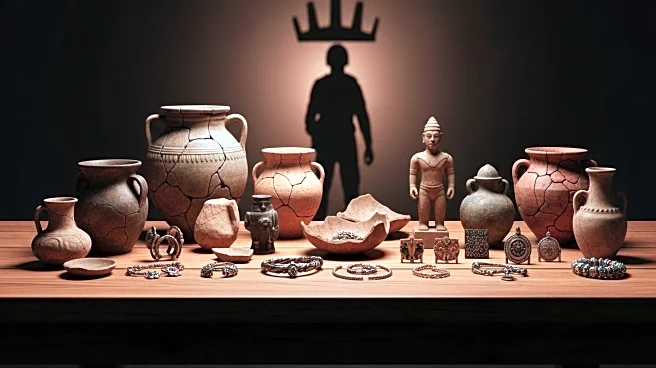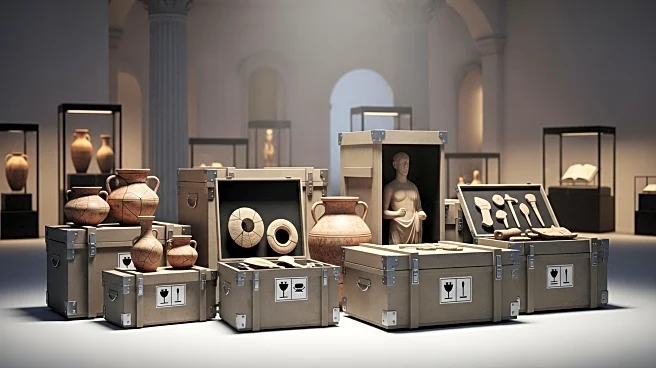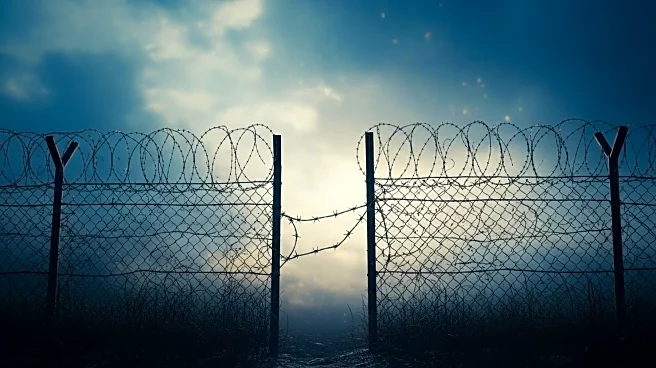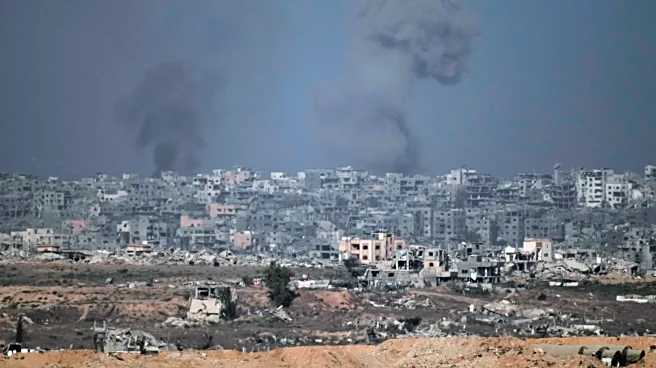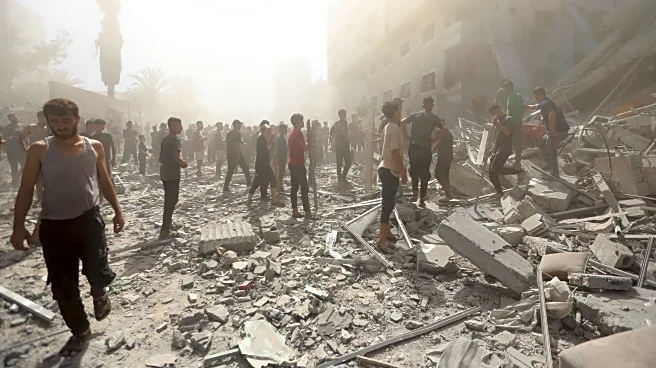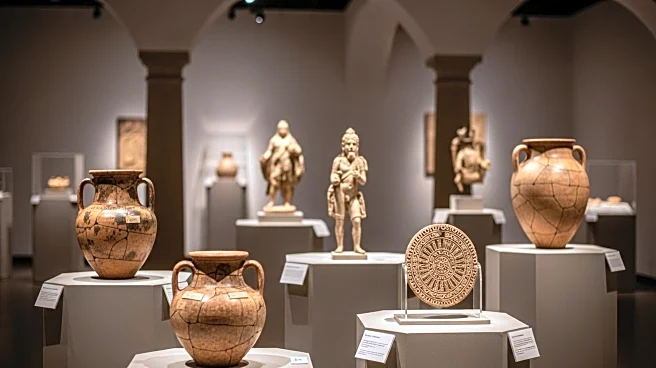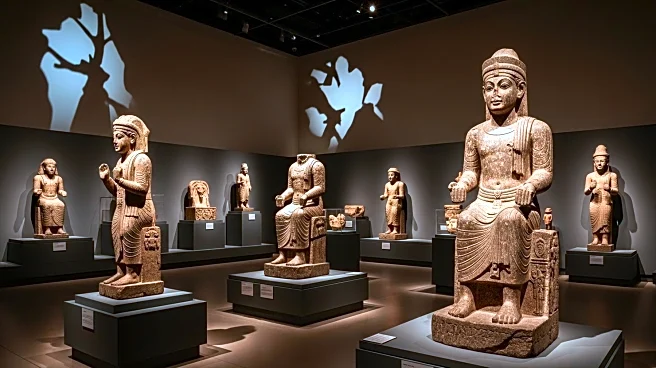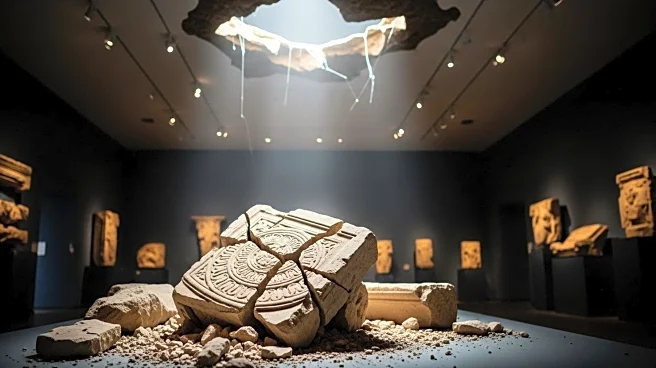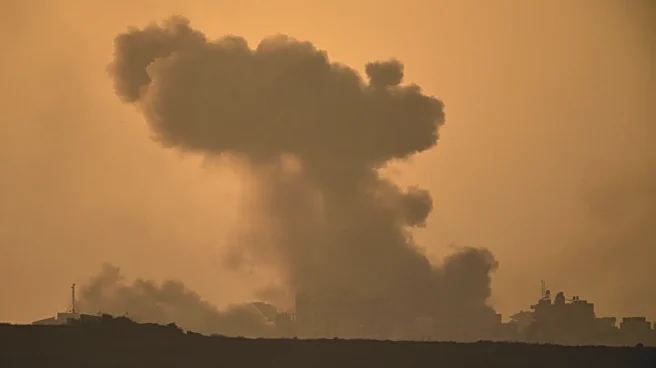What's Happening?
The Geneva Museum of Art and History (MAH) has played a crucial role in evacuating thousands of artefacts from Gaza's main archaeological storage facility ahead of an Israeli military strike. The facility, located in the Al-Kawthar residential tower in Gaza City, was targeted due to alleged Hamas infrastructure. The evacuation, coordinated with international bodies like UNESCO and the Latin Patriarchate of Jerusalem, managed to save 70% of the artefacts, including items from the Saint Hilarion Monastery. Despite the successful evacuation, 30% of the artefacts, primarily ceramics and lapidary objects, were left behind. The operation involved over 20 people, including members of Première Urgence Internationale, who faced challenges such as using unsuitable trucks and limited packaging.
Why It's Important?
This evacuation highlights the ongoing cultural and humanitarian challenges in conflict zones like Gaza. The artefacts represent significant historical and cultural heritage, not only for Gaza's Christian community but for all Gazans and Palestinians. The operation underscores the importance of international cooperation in preserving cultural heritage amidst conflict. The destruction of cultural sites in Gaza has been a point of contention, with organizations like Emek Shaveh criticizing the Israeli military's actions as violations of international law. The preservation of these artefacts is crucial for maintaining cultural identity and history in regions affected by prolonged conflict.
What's Next?
The future of the evacuated artefacts remains uncertain, as they require safe storage and potential restoration. International organizations may continue to pressure for the protection of cultural sites in conflict zones. The situation also calls for a reassessment of military strategies that endanger cultural heritage. Further diplomatic efforts may be necessary to ensure the safety of remaining artefacts and to prevent future destruction of cultural sites in Gaza.
Beyond the Headlines
The evacuation raises ethical questions about the protection of cultural heritage during armed conflicts. It also highlights the role of international organizations and museums in safeguarding history. The incident may prompt discussions on the responsibilities of occupying forces under international law, particularly the Hague Convention, which protects cultural property during conflicts.

